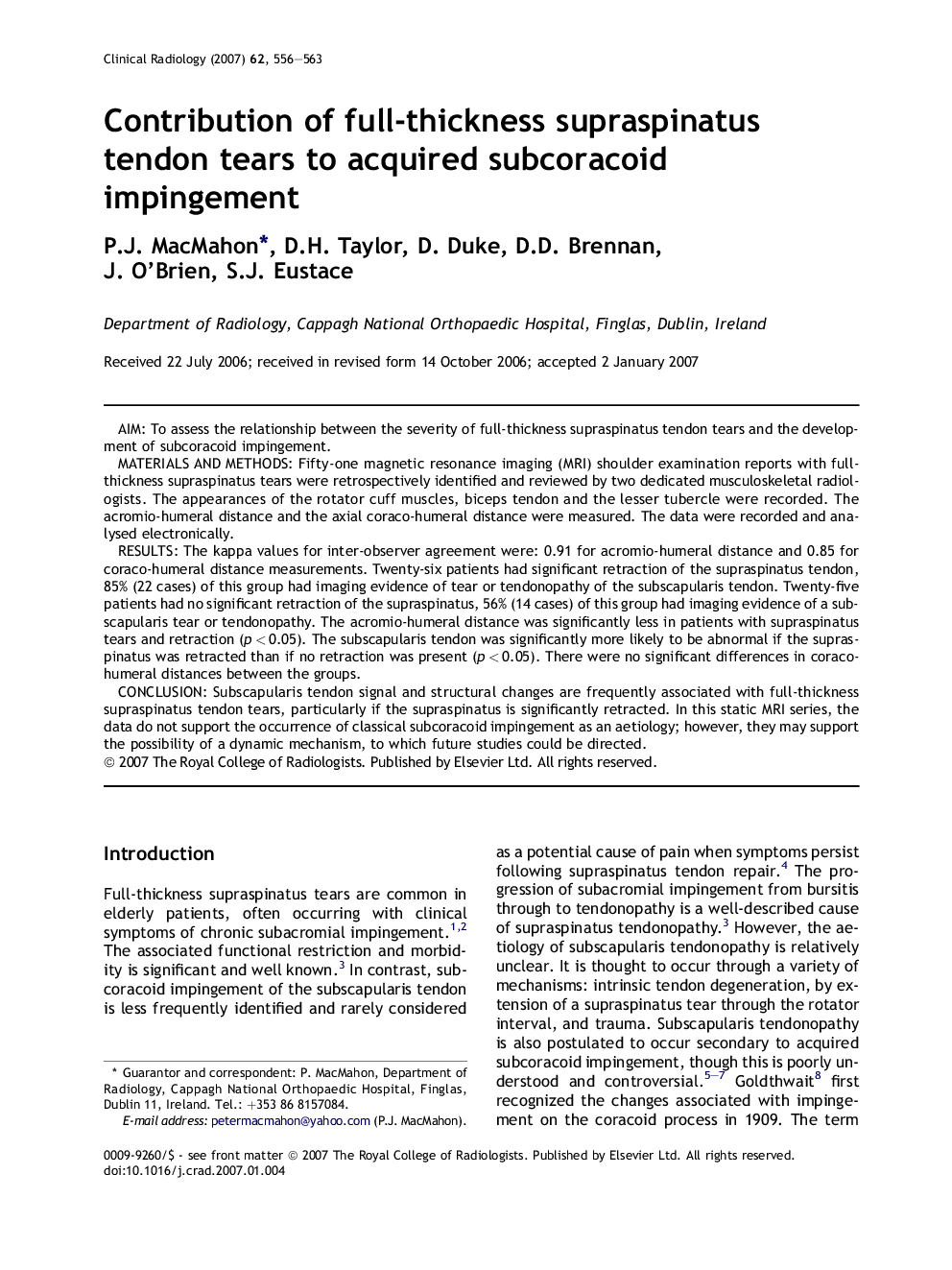| کد مقاله | کد نشریه | سال انتشار | مقاله انگلیسی | نسخه تمام متن |
|---|---|---|---|---|
| 3984299 | 1257830 | 2007 | 8 صفحه PDF | دانلود رایگان |

AimTo assess the relationship between the severity of full-thickness supraspinatus tendon tears and the development of subcoracoid impingement.Materials and methodsFifty-one magnetic resonance imaging (MRI) shoulder examination reports with full-thickness supraspinatus tears were retrospectively identified and reviewed by two dedicated musculoskeletal radiologists. The appearances of the rotator cuff muscles, biceps tendon and the lesser tubercle were recorded. The acromio-humeral distance and the axial coraco-humeral distance were measured. The data were recorded and analysed electronically.ResultsThe kappa values for inter-observer agreement were: 0.91 for acromio-humeral distance and 0.85 for coraco-humeral distance measurements. Twenty-six patients had significant retraction of the supraspinatus tendon, 85% (22 cases) of this group had imaging evidence of tear or tendonopathy of the subscapularis tendon. Twenty-five patients had no significant retraction of the supraspinatus, 56% (14 cases) of this group had imaging evidence of a subscapularis tear or tendonopathy. The acromio-humeral distance was significantly less in patients with supraspinatus tears and retraction (p < 0.05). The subscapularis tendon was significantly more likely to be abnormal if the supraspinatus was retracted than if no retraction was present (p < 0.05). There were no significant differences in coraco-humeral distances between the groups.ConclusionSubscapularis tendon signal and structural changes are frequently associated with full-thickness supraspinatus tendon tears, particularly if the supraspinatus is significantly retracted. In this static MRI series, the data do not support the occurrence of classical subcoracoid impingement as an aetiology; however, they may support the possibility of a dynamic mechanism, to which future studies could be directed.
Journal: Clinical Radiology - Volume 62, Issue 6, June 2007, Pages 556–563